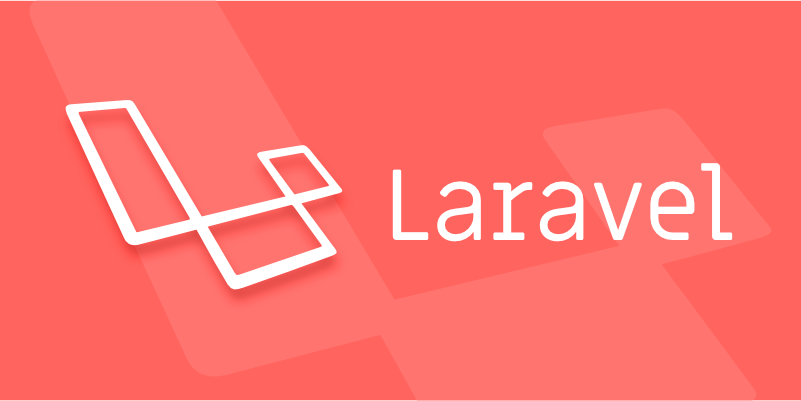 PHP Framework
PHP Framework
 Laravel
Laravel
 Explain Laravel's IoC Container binding methods (`bind`, `singleton`, `instance`).
Explain Laravel's IoC Container binding methods (`bind`, `singleton`, `instance`).
Explain Laravel's IoC Container binding methods (`bind`, `singleton`, `instance`).
Jul 15, 2025 am 12:56 AMThe difference between the three binding methods of bind, singleton and instance in Laravel's IoC container is that the instance creation and reuse methods are different. 1. bind creates a new instance every time it resolves, suitable for stateless services or short-term tasks; 2. singleton creates an instance only once during the entire request life cycle, suitable for global shared services such as database connections; 3. instance directly binds existing instances, suitable for testing environments or manually controls instance creation. These three methods correspond to different usage scenarios, and understanding their differences will help better manage dependencies and service life cycles.

Laravel's IoC container is one of the core mechanisms of the framework, which is responsible for managing the dependencies of classes and performing automatic injection. Among them, bind , singleton and instance are three commonly used binding methods, which determine how the container parses and returns an instance of a class. Let’s take a look at their respective functions and usage scenarios.

1. bind : basic binding, create a new instance every time you request
bind is the most basic binding method. When you register a class or interface through bind , the IoC container will create a new instance every time it is parsed.
$this->app->bind('Service', function ($app) {
return new Service();
});This method is suitable for service classes that do not require shared state . For example, you have a logger, and each call requires a new independent instance to process the log information of the current context.

?? Note: If you call
resolve('Service')in multiple places or inject through type prompts, you will get different instances.
2. singleton : singleton binding, create an instance only once
As the name suggests, singleton ensures that the class will only be instantiated once during the entire request life cycle, and all subsequent calls will return the same instance.

$this->app->singleton('Service', function ($app) {
return new Service();
});This is very useful when sharing state or resources are needed, such as database connection pools, configuration services, cache services, etc. You want these services to remain consistent throughout the entire application run.
? Tips: If you want a class to register as a singleton by default, you can implement
Illuminate\Contracts\Container\SingletonInterfaceinterface in this class.
3. instance : directly bind existing instances
Sometimes you already have a created object and want to hand it over to container management directly. At this time, you can use instance :
$service = new Service(); $this->app->instance('Service', $service);
In the future, no matter where Service is parsed, this pre-created $service instance will be returned.
This is common in the test environment, or you want to manually control the instance creation process (for example, using factory pattern or other initialization logic).
Several key differences in use
-
bind: Every time it is a new instance. -
singleton: There is only one instance in the entire life cycle. -
instance: Use the instance you provide directly.
| method | Whether to reuse instances | Applicable scenarios |
|---|---|---|
bind
|
no | Stateless service, short-term tasks |
singleton
|
yes | Global shared services and resource management |
instance
|
Yes (fixed) | Manual creation, testing, special requirements |
Basically that's it. Understanding the difference between these three binding methods can help you better manage dependencies and service life cycles in Laravel.
The above is the detailed content of Explain Laravel's IoC Container binding methods (`bind`, `singleton`, `instance`).. For more information, please follow other related articles on the PHP Chinese website!

Hot AI Tools

Undress AI Tool
Undress images for free

Undresser.AI Undress
AI-powered app for creating realistic nude photos

AI Clothes Remover
Online AI tool for removing clothes from photos.

Clothoff.io
AI clothes remover

Video Face Swap
Swap faces in any video effortlessly with our completely free AI face swap tool!

Hot Article

Hot Tools

Notepad++7.3.1
Easy-to-use and free code editor

SublimeText3 Chinese version
Chinese version, very easy to use

Zend Studio 13.0.1
Powerful PHP integrated development environment

Dreamweaver CS6
Visual web development tools

SublimeText3 Mac version
God-level code editing software (SublimeText3)

Hot Topics
 What are policies in Laravel, and how are they used?
Jun 21, 2025 am 12:21 AM
What are policies in Laravel, and how are they used?
Jun 21, 2025 am 12:21 AM
InLaravel,policiesorganizeauthorizationlogicformodelactions.1.Policiesareclasseswithmethodslikeview,create,update,anddeletethatreturntrueorfalsebasedonuserpermissions.2.Toregisterapolicy,mapthemodeltoitspolicyinthe$policiesarrayofAuthServiceProvider.
 How do I install Laravel on my operating system (Windows, macOS, Linux)?
Jun 19, 2025 am 12:31 AM
How do I install Laravel on my operating system (Windows, macOS, Linux)?
Jun 19, 2025 am 12:31 AM
Yes,youcaninstallLaravelonanyoperatingsystembyfollowingthesesteps:1.InstallPHPandrequiredextensionslikembstring,openssl,andxmlusingtoolslikeXAMPPonWindows,HomebrewonmacOS,oraptonLinux;2.InstallComposer,usinganinstalleronWindowsorterminalcommandsonmac
 What are controllers in Laravel, and what is their purpose?
Jun 20, 2025 am 12:31 AM
What are controllers in Laravel, and what is their purpose?
Jun 20, 2025 am 12:31 AM
The main role of the controller in Laravel is to process HTTP requests and return responses to keep the code neat and maintainable. By concentrating the relevant request logic into a class, the controller makes the routing file simpler, such as putting user profile display, editing and deletion operations in different methods of UserController. The creation of a controller can be implemented through the Artisan command phpartisanmake:controllerUserController, while the resource controller is generated using the --resource option, covering methods for standard CRUD operations. Then you need to bind the controller in the route, such as Route::get('/user/{id
 How do I customize the authentication views and logic in Laravel?
Jun 22, 2025 am 01:01 AM
How do I customize the authentication views and logic in Laravel?
Jun 22, 2025 am 01:01 AM
Laravel allows custom authentication views and logic by overriding the default stub and controller. 1. To customize the authentication view, use the command phpartisanvendor:publish-tag=laravel-auth to copy the default Blade template to the resources/views/auth directory and modify it, such as adding the "Terms of Service" check box. 2. To modify the authentication logic, you need to adjust the methods in RegisterController, LoginController and ResetPasswordController, such as updating the validator() method to verify the added field, or rewriting r
 How do I use Laravel's validation system to validate form data?
Jun 22, 2025 pm 04:09 PM
How do I use Laravel's validation system to validate form data?
Jun 22, 2025 pm 04:09 PM
Laravelprovidesrobusttoolsforvalidatingformdata.1.Basicvalidationcanbedoneusingthevalidate()methodincontrollers,ensuringfieldsmeetcriterialikerequired,maxlength,oruniquevalues.2.Forcomplexscenarios,formrequestsencapsulatevalidationlogicintodedicatedc
 Selecting Specific Columns | Performance Optimization
Jun 27, 2025 pm 05:46 PM
Selecting Specific Columns | Performance Optimization
Jun 27, 2025 pm 05:46 PM
Selectingonlyneededcolumnsimprovesperformancebyreducingresourceusage.1.Fetchingallcolumnsincreasesmemory,network,andprocessingoverhead.2.Unnecessarydataretrievalpreventseffectiveindexuse,raisesdiskI/O,andslowsqueryexecution.3.Tooptimize,identifyrequi
 How do I escape HTML output in a Blade template using {{{ ... }}}? (Note: rarely used, prefer {{ ... }})
Jun 23, 2025 pm 07:29 PM
How do I escape HTML output in a Blade template using {{{ ... }}}? (Note: rarely used, prefer {{ ... }})
Jun 23, 2025 pm 07:29 PM
InLaravelBladetemplates,use{{{...}}}todisplayrawHTML.Bladeescapescontentwithin{{...}}usinghtmlspecialchars()topreventXSSattacks.However,triplebracesbypassescaping,renderingHTMLas-is.Thisshouldbeusedsparinglyandonlywithfullytrusteddata.Acceptablecases
 How do I mock dependencies in Laravel tests?
Jun 22, 2025 am 12:42 AM
How do I mock dependencies in Laravel tests?
Jun 22, 2025 am 12:42 AM
TomockdependencieseffectivelyinLaravel,usedependencyinjectionforservices,shouldReceive()forfacades,andMockeryforcomplexcases.1.Forinjectedservices,use$this->instance()toreplacetherealclasswithamock.2.ForfacadeslikeMailorCache,useshouldReceive()tod





